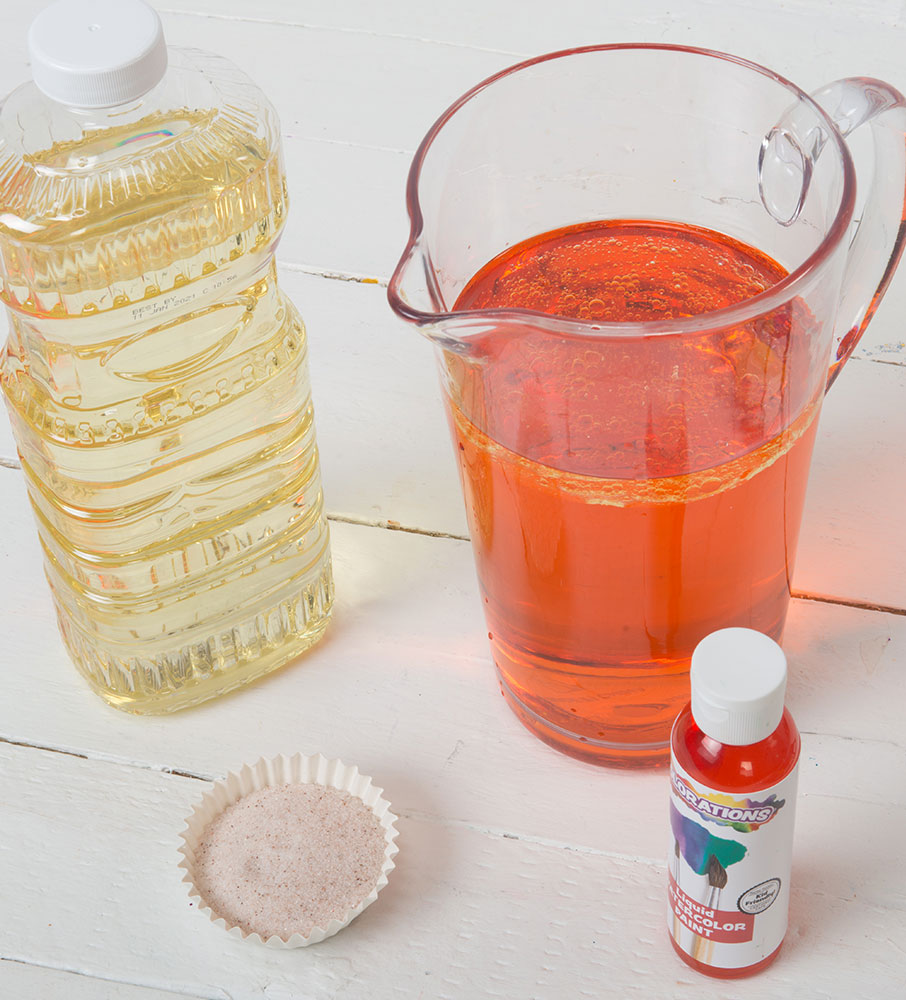
Menu
- Home
- Swimming Lava STEM Activity
swimming lava


intro
This experiment is a colorful way to demonstrate some of the differences between oil and water. Children will learn that oil is less dense than water, but salt is denser and heavier than both. By combining them, you can create a unique visual experience!
set up ideas
If possible, you may wish to give each child their own glass of water to work with or have them work in small groups using different colors.
This experiment is a colorful way to demonstrate some of the differences between oil and water. Children will learn that oil is less dense than water, but salt is denser and heavier than both. By combining them, you can create a unique visual experience!
set up ideas
If possible, you may wish to give each child their own glass of water to work with or have them work in small groups using different colors.
let's get started
For this colorful science activity, you'll need to gather the following: cooking oil (such as vegetable oil), cold water (without ice), salt, a clear glass or jar and Liquid Watercolor or food coloring.
step 1
Fill the clear glass or jar about three-quarters full of cold water. The water should be cold, but not iced. Then, stir in a few drops of food coloring.
Fill the clear glass or jar about three-quarters full of cold water. The water should be cold, but not iced. Then, stir in a few drops of food coloring.
step 2
Add cooking oil to the water—enough so that it will add about 1/2 inch. The oil will float on the top of the water.
Add cooking oil to the water—enough so that it will add about 1/2 inch. The oil will float on the top of the water.
step 3
Wait until the oil and water have completely separated into two distinct layers before continuing to the final step.
Wait until the oil and water have completely separated into two distinct layers before continuing to the final step.
step 4
Sprinkle salt on top of the oil. Continue adding salt to see what happens. The salt will begin to sink and take blobs of oil with it, creating a lava-type reaction.
Sprinkle salt on top of the oil. Continue adding salt to see what happens. The salt will begin to sink and take blobs of oil with it, creating a lava-type reaction.
Why does oil float on top of water? Because it is less dense! The heavier, more dense water sinks while the light oil sits on top. Salt, on the other hand, is denser than both oil and water. As the salt sinks, it drags some oil with it to create mesmerizing visuals.
Liquid motion bubble timers are another way to demonstrate how oil and water do not mix. You may wish to demonstrate one of these after this experiment and discuss how they work.
 Follow up Activity
Follow up ActivityLava, shooting stars, deep sea divers—children may relate what they see as the salt sinks down to any number of other visualizations. Have them recreate what they've seen or imagined with any art materials you have available.


